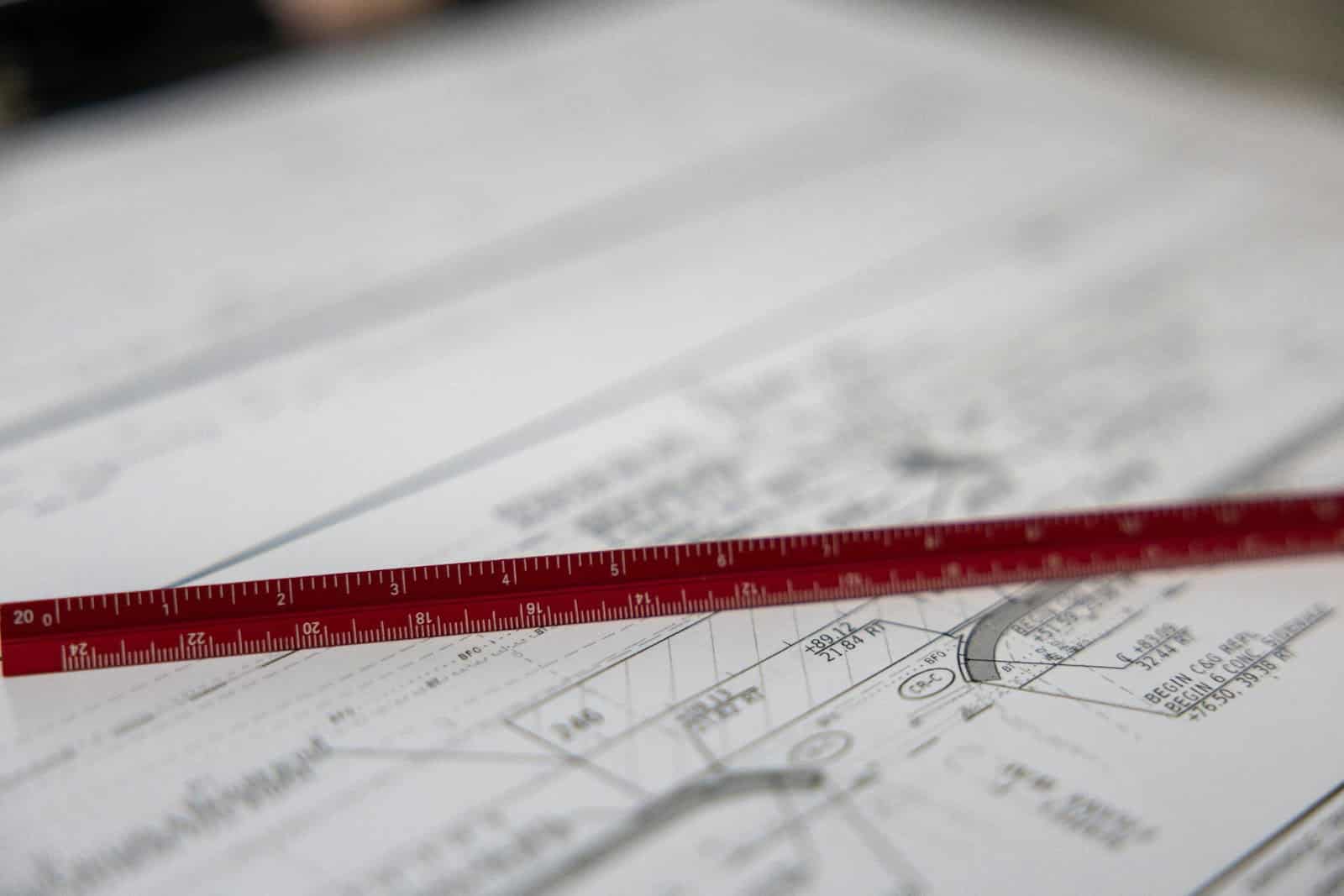Engineering stamps are crucial in the world of design and construction. They signify a professional’s approval and responsibility for a project. But can a mechanical engineer stamp a structural drawing, or vice versa? This question often arises in cross-discipline projects. Understanding the rules and regulations is essential.
Each engineering discipline has specific roles and responsibilities. These are often governed by state engineering board requirements. Licensure laws vary by state, affecting who can stamp which drawings.
Cross-discipline engineering stamps are generally restricted. This ensures safety and compliance with engineering ethics. Engineers must be qualified in the discipline they are stamping.
This article will explore the intricacies of engineering stamping. It will clarify the limitations and responsibilities associated with cross-discipline stamps.
Understanding Engineering Stamps and Their Purpose
Engineering stamps play a critical role in the building industry. They ensure the integrity and safety of designs. When an engineer stamps a drawing, it’s a professional endorsement.
These stamps are not just symbols. They are legal tools. They certify that the design complies with standards and regulations. They show the engineer’s responsibility for the project’s safety.
Stamps serve several purposes, including:
- Demonstrating design approval
- Indicating compliance with local codes
- Ensuring accountability and expertise
It’s important to recognize that stamped drawings are legally binding. They carry weight in both construction and legal settings. The stamp signifies that a licensed professional has reviewed the design.
Moreover, stamps help prevent errors and increase accountability. Only engineers with appropriate licensure can use them. This ensures that only qualified individuals approve designs.
Mechanical vs. Structural Engineer: Roles and Licensure
Mechanical and structural engineers possess distinct skill sets. Their work focuses on different parts of a project. Understanding these differences is essential for proper licensure.
Mechanical engineers focus on systems and mechanics. They design HVAC systems, machinery, and tools. Their work ensures that mechanical components function efficiently and safely.
Structural engineers are responsible for the stability of structures. They analyze and design load-bearing elements. Safety and integrity are their primary concerns.
Key differences include:
- Focus on machinery vs. structures
- Types of projects involved
- Licensure exams and requirements
Licensure for each discipline involves different criteria. Engineers must pass specialized exams to demonstrate their competence. This ensures they have the necessary expertise for their roles.
State boards regulate the licensure process. They ensure engineers meet strict criteria to protect public safety. Continuing education keeps engineers updated on their discipline’s standards.
The distinction between mechanical and structural licenses is vital. It prevents engineers from working outside their expertise. This system maintains high standards and public trust.
Engineering Licensure Laws and State Board Requirements
Licensure laws for engineers vary across states. Each state has its board managing these laws. The primary goal is to ensure only qualified individuals practice engineering.
The licensure process generally includes education, experience, and examinations. An engineering degree is typically required. Prospective engineers must also gain practical experience under licensed professionals.
State boards specify the exams and requirements. The Fundamentals of Engineering (FE) exam is a common first step. Passing it is necessary before taking the Principles and Practice of Engineering (PE) exam.
Each state may impose additional requirements. These could include:
- Specific work experience years
- Continuing education credits
- Detailed documentation of projects
Boards also enforce discipline-specific criteria. This prevents engineers from exceeding their areas of expertise. Adhering to these rules is crucial for maintaining a valid license.
Compliance with state engineering board requirements protects the public. It ensures that professional engineers uphold high ethical and competency standards. This system is essential for the engineering industry’s integrity.
Stamping Across Disciplines: What the Law Says
Stamping across engineering disciplines is tightly regulated. Such regulations aim to maintain safety standards and ethical practice. Generally, laws prohibit engineers from stamping outside their expertise.
Legal frameworks are clear: expertise matters. Mechanical engineers, for instance, should not stamp structural drawings. Conversely, structural engineers cannot stamp mechanical designs.
Despite restrictions, some overlap may occur. It happens only when an engineer demonstrates proficiency in both fields. This requires substantial proof of knowledge and skills.
Cross-discipline stamping demands rigorous evaluation. Engineers must demonstrate comprehensive experience and education. Without these, stamping across disciplines could lead to legal consequences.
Core considerations for cross-discipline stamps include:
- Engineer’s relevant licensure and expertise
- Risks associated with cross-stamping
- Verification by state boards or similar authorities
These guidelines ensure that only qualified engineers stamp documents. Public safety and adherence to ethical standards depend on these regulations.
By restricting cross-discipline stamps, laws help maintain design integrity and safety. They ensure that each engineer’s stamp signifies reliable, expert approval. Complying with these laws is a critical aspect of an engineer’s duty.
Who Can Stamp Structural Drawings?
Stamping structural drawings is a serious responsibility. Only engineers with specific qualifications can perform this task. A structural engineer typically holds the necessary license.
State regulations set the standards for structural stamping. These standards ensure that only qualified professionals approve designs. The focus is on public safety and engineering integrity.
For an engineer to stamp structural drawings, they must demonstrate proven expertise. This means having a structural engineering license. Additionally, they need relevant experience in structural projects.
Typically, engineers must meet several criteria to be eligible:
- Hold a current structural engineering license
- Have practical experience in structural design
- Pass necessary exams for engineering licensure
In some cases, a mechanical engineer might qualify. This requires extensive structural experience and board approval. Adhering to these guidelines ensures that structural designs meet safety codes and standards. Ultimately, ensuring that only specialized engineers handle structural drawings is critical for maintaining safety and quality.
Who Can Stamp Mechanical Drawings?
Mechanical drawings require careful consideration. Only qualified professionals can stamp them. Typically, a licensed mechanical engineer fills this role.
Mechanical engineers focus on systems and machinery. Their expertise ensures that designs meet functionality and safety standards. A mechanical stamp signifies this approval.
State laws dictate who can stamp mechanical drawings. These laws aim to protect public safety. Engineers must comply with licensure requirements to stamp these documents.
Several factors qualify an engineer to stamp mechanical drawings:
- Holding a mechanical engineering license
- Relevant experience in mechanical design
- Passing required licensure exams
Some structural engineers may qualify to stamp mechanical drawings. However, this is rare. It requires approval from the engineering board and extensive mechanical experience.
In conclusion, only knowledgeable engineers should stamp mechanical drawings. Their stamp guarantees that the design adheres to all applicable codes and regulations. This helps maintain safety and uphold professional standards in engineering projects.
Engineering Ethics and Stamping Responsibilities
Engineering ethics play a crucial role in stamping practices. Engineers must maintain integrity and honesty. They should stamp only drawings within their competence.
Stamps represent more than just approval. They signify professional accountability and adherence to safety standards. Unethical stamping can lead to serious consequences.
Engineers have responsibilities to uphold when stamping drawings. Key ethical stamping responsibilities include:
- Verifying all aspects of the design for compliance
- Ensuring the stamp reflects personal approval and expertise
- Avoiding conflicts of interest in the stamping process
These ethical guidelines protect both the public and the profession. By following them, engineers ensure trust and safety in their work. Responsible stamping practices reflect the engineer’s commitment to excellence.
Consequences of Improper Stamping
Improper stamping can have severe repercussions. Engineers risk legal issues and professional sanctions. The integrity of projects might be compromised, endangering public safety.
Legal consequences can include fines and lawsuits. Violating professional standards can lead to license suspensions. Engineers may face disciplinary actions from their state boards.
Beyond legal ramifications, there’s reputational damage. Trust is crucial in engineering, and improper actions can tarnish an engineer’s credibility. Key consequences of improper stamping include:
- Legal liabilities and potential lawsuits
- Professional disciplinary actions
- Loss of trust and credibility
by Marmi Sica (https://unsplash.com/@marmis239)
Strict adherence to stamping rules helps avoid these risks. Ensuring compliance protects both the public and the engineer’s career. Proper stamping reinforces professional standards and public trust.
Best Practices for Design Approval and Certification
Successfully navigating design approval processes requires diligence. Engineers should adhere to state-specific regulations. Keeping informed about changes in engineering licensure laws is crucial.
To maintain ethical standards, engineers should only certify designs within their expertise. Collaborating with qualified professionals across disciplines enhances the integrity of projects. Continual education ensures that skills remain current and compliant with industry standards.
Key best practices for design approval include:
- Stay updated on state and federal regulations.
- Collaborate with other professionals for cross-discipline projects.
- Pursue continuing education to enhance skills.
- Adhere strictly to professional ethics and qualifications.
Following these best practices ensures designs meet all necessary standards. This process protects public safety and upholds engineering integrity.
Frequently Asked Questions About Engineering Stamps
Engineering stamps can seem complex. Many questions arise around who can stamp different types of drawings. Engineers must navigate various regulations and ethics while stamping.
Here are some common questions and clarifications:
- Can a mechanical engineer stamp structural drawings? Generally not, unless licensed in structural engineering.
- Who ensures compliance in stamping? State engineering boards govern this.
- Why are stamps important? They certify design compliance and safety.
Understanding these aspects helps professionals remain compliant and informed. Ensuring that one is knowledgeable about current guidelines is vital in maintaining engineering integrity.
Conclusion: Staying Compliant and Ethical in Engineering Stamping
Engineering stamping requires strict adherence to rules and ethics. Compliance is key to ensuring the integrity of engineering work. Both structural and mechanical engineers must stamp within their expertise.
Being well-versed in state licensing laws and engineering ethics is vital. These laws safeguard public safety by enforcing standards. Knowledge of these regulations helps engineers make informed decisions.
By following best practices, engineers can maintain professional integrity. Responsible stamping not only protects the public but also upholds the reputation of the engineering profession. Always aim to ensure accuracy and safety in every project.







